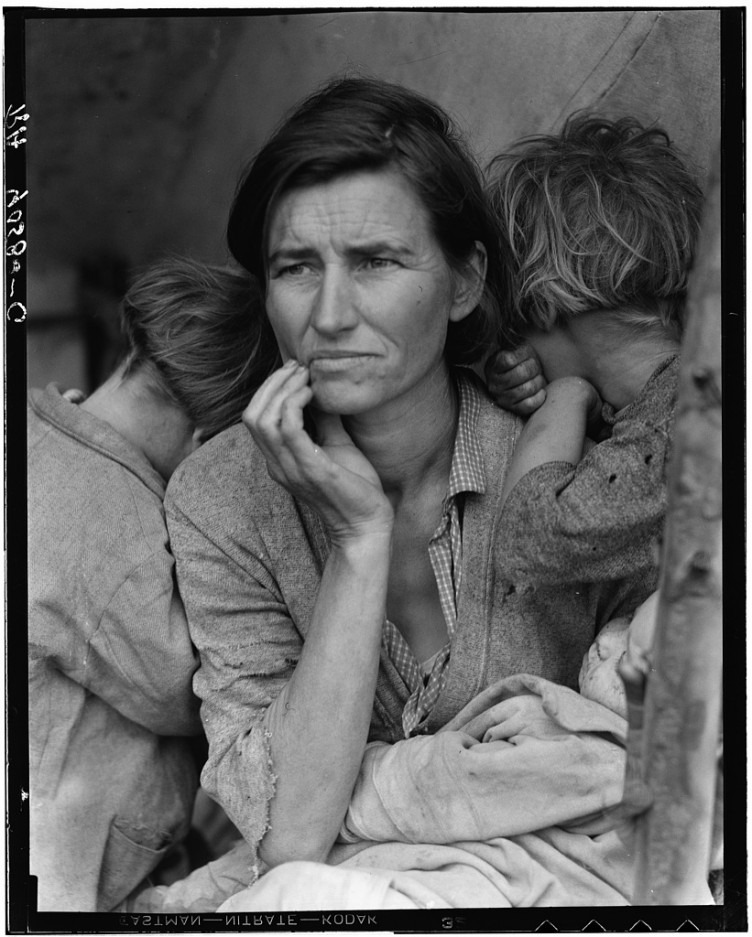
While there are a number of rules and guidelines to help designers create the best and most effective pieces of storytelling, there are also sins that come with storytelling as well. Unfortunately, the trust that people put into the things they see and read online nowadays has come under a lot of scrutiny in recent years as designers are called out for flaws and issues in their work. One in particular which I feel is the greatest sin in visual storytelling is the altering of elements within a photo to change that what was originally captured by the photographer on scene. When a person gives a compelling speech, it is easy to tell whether or not the words they are saying are scripted or from the heart on the spot. The same can no longer be said in identifying photos that have been altered, because people just assume everything they see is the truth. Michael Kamber puts this into words saying, “People have to believe, ‘I’m seeing this picture, this picture was vetted by a professional, it really happened, and it happened as I’m seeing it in front of me” (Mallonee).

One of the reasons this issue has been coming up more and more is because people have more access to editing software for photos which allows for their pieces to “look more professional” in a world overrun by images and graphics. But if people look to alter and distort the reality of the real world, then how are viewers supposed to connect to something that doesn’t exist. Photographers choose to photograph and frame up images the way they do because it plays into their artistic choice in how to best portray and tell the story that they are seeing live. That human perception should not be altered for something more aesthetically pleasing such as when National Geographic moved the Pyramids of Giza closer together for their cover shot (Bronx Documentary Center).

One though that I had when researching this issue was wondering which move is more shameful in photo shopping a picture. Adding something that didn’t exist before or removing something that was in the picture? This argument can go both ways but I do feel that adding something into a picture makes it more unworthy of a moment while removing feels more like betrayal to the subject and viewer in not giving them the opportunity to see what was captured for the story. Even though the are many tools in photo shopping, that does not detract from photographers instead also staging their shots to be more effective in things like photojournalism. By using the element of human emotion and interaction, they can shape photos to emit more powerful reactions from viewers such as the Migrant Mother photo. Because photographs contain only what lies between their lines, it is up to common sense to come to conclusions about what people see (Conscientious). Sometimes altering pictures for what people think will improve their images could instead lead down a path where they are more likely to be caught and lose the trust of their viewers who will gladly move onto one of the million other options on the Internet to see storytelling content.
Works Cited
Colberg, Jorg M. “Looking at Dorothea Lange’s Migrant Mother.” Conscientious Photography Magazine, Conscientious Photography Magazine, 30 Jan. 2018, cphmag.com/migrant-mother/.
Gahan, Gordon. “National Geographic.” ALTERED IMAGES, www.alteredimagesbdc.org/national-geographic/.
Mallonee, Laura. “Infamously Altered Photos, Before and After Their Edits.” Wired, Conde Nast, 17 Nov. 2017, www.wired.com/2015/07/bronx-documentary-center-infamously-altered-photos-edits/.
Ravyn. “Top 15 Photoshopped Photos That Fooled Us All.” Listverse, 27 July 2014, listverse.com/2007/10/19/top-15-manipulated-photographs/.




